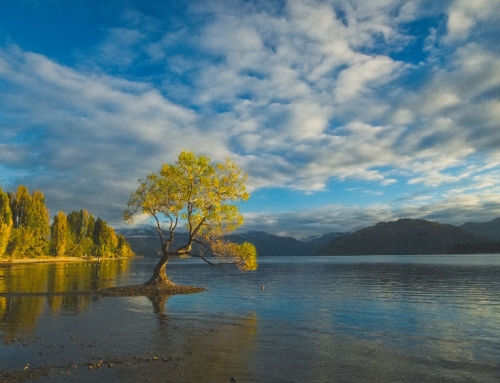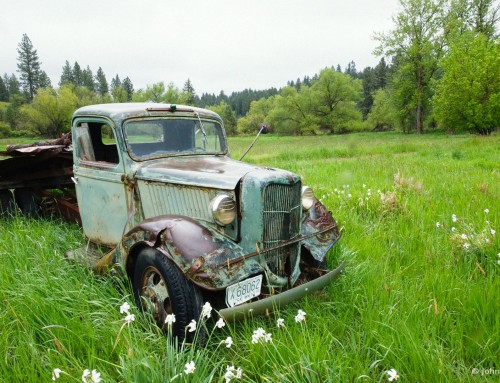Learn how the Exposure Bundle operates as a series of Lightroom plug-ins.
Enjoy this quick video guide to getting started using the Exposure Bundle in an editing workflow with Adobe Lightroom. The tutorial will take you step-by-step through how to launch and use all of the award-winning apps in the bundle as Lightroom plug-ins. The Edit In menu gives you access to each one. It’s accessible from Lightroom’s Library or Develop modules.
Once you have a selection of shots to process, you can apply evocative film styles and make detailed edits using Exposure, create tack-sharp enlargements with Blow Up, and turn your photos into handcrafted paintings with Snap Art. You can quickly apply preset looks, or customize each look with the panels on the right-hand dock. By the end of the video, you’ll see how to use each bundle app from within a Lightroom workflow.
Photos: John Barclay
Transcript
When you run the bundle installer, it will automatically install into Lightroom.
After installation, launch Lightroom, then select a photo to edit from either the Library or Developer modules.
You can also select multiple images to edit in the same session. A group of neighboring images can be selected with Shift+click. Or ⌘+click will select or deselect individual images. Use Ctrl+Click on Windows.
With images selected, right click, choose ‘Edit In’ and select the tool to use. Let’s start by editing in Exposure. Choose Edit a Copy with Lightroom Adjustments to preserve any Lightroom edits that have been applied to the images. Click Edit to have Lightroom create copies of each of the images and open them the bundle app selected.
Exposure
With images open in Exposure, begin processing by selecting an image. Double-click on an image to view it at full size.
Begin applying effects by selecting a preset from the presets list on the left side. Exposure’s library of carefully curated presets make quick work of editing photos. Use them to apply an accurate reproduction of a classic, modern, or vintage film, or an entirely new creative look to photos. Hover over preset thumbnails to see how they will look when applied to the selected image. Click to apply it.
Exposure’s presets are great on their own, and they are useful as starting points for custom looks. Easily make adjustments to images with the powerful editing tools in the right-hand dock. The Basic panel, for example, provides controls to adjust exposure, contrast, and saturation.
Notice the adjustments I make are applied to the image I have selected. Exposure allows me to apply edits to multiple images, simultaneously. Use ⌘+click or Ctrl+click and click to select more than one at a time. To accept my changes and return to Lightroom, I’ll click Save.
Our tutorial library has videos covering tons of topics in photo editing from color grading to portrait touch up, and many more. They are also a great place to learn about how to use Exposure. Visit our site and check them out.
Our tutorial list is always growing. Subscribe to our YouTube channel or sign up for our newsletter to be notified when we publish new tutorials. We cover all of Exposure’s editing panels in our library of editing tutorial videos. You can also learn about Exposure’s photo management tools in our organizing videos.
Snap Art
To apply natural media looks like oil paint and watercolor, right-click on your image, or images in Lightroom, select “Edit In,” and Snap Art. This demonstration includes multiple images in a batch. A list of natural media types appears in the Presets panel. The Effects Tour folder provides a quick preview of each of the 11 categories.
When you see an effect you like, click on the preview thumbnail to apply it to your image. To enlarge the preview thumbnails, collapse the Editing panel and expand the Presets panel. This makes it easy to scroll through large-size previews of all the different natural media looks.
Any adjustments I make are applied to the image or images that I have selected. I’ll press ⌘+A on the Mac or Ctrl+A on Windows to select them all.
Select the preview thumbnail to apply it. Refine the effect with the editing panels on the right dock. We suggest starting with the controls at the top of the panel and working your way down.
Edited versions are saved into the same folder as the original image, and are visible in Lightroom.
Sharp Image Resizing Using Blow Up
To access the Blow Up image enlargement tools, right-click on your image or images in Lightroom, choose Edit in, and Blow Up. You can also batch select multiple images. When preparing images for print, it’s best to make a copy of the image specifically for that purpose.
To the left is the thumbnail navigator image and the User Settings panel. In the center are zooming and panning controls. On the right side are the adjustment tools. These include a button for each resizing mode: Crop & Resize, Resize, and Stretch.
Crop & Resize is especially useful because it crops your image to proportionally fill the output. It places the crop area over the most interesting part of your image. You can fine tune this location easily.
Resize mode resizes your image while retaining its original proportions, without cropping or stretching.
Stretch mode forces your image to fit the output size. This is best used when your output size and photo size are nearly identical.
After you’ve picked your mode, choose your document size. You can make refinements like adding grain and sharpening your image for output, which compensates for ink diffusion on paper.
When working in Blow Up, I’ll click OK to confirm my edits to a single image, or click Finish Batch if I resized multiple images. Back in Lightroom’s grid view, I can see a new copy of each edited image next to the Lightroom originals.
If you’re processing images using each app in the Exposure Bundle, it’s best to apply the Snap Art natural media effects after you’ve enlarged your image using Blow Up. This will give the sharpest looking result.


